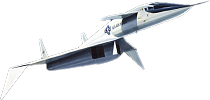‘Star Wars world’ found in triple star system
* 18:41 13 July 2005
* NewScientist.com news service
* Hazel Muir

A Jupiter-sized planet hovers in the sky beside a triple star system, as seen from a hypothetical moon nearby (Image: NASA/JPL-Caltech)
A giant planet has been discovered in a tight-knit system of three stars - reminiscent of the binary-star system of Tatooine, Luke Skywalker's home planet in the movie "Star Wars". Its survival, against all odds, presents a major challenge to theories of how planets form.
The new Jupiter-class planet orbits close to a Sun-like star, while two further stars circle farther out, at roughly the distance between Saturn and the Sun. “How that planet formed in such a complicated setting is very puzzling,” says Maciej Konacki of the California Institute of Technology in Pasadena, US.
Astronomers have now discovered about 150 planets beyond the solar system. During a planet hunt, they typically observe single stars to see if they are wobbling slightly due to the gravitational pull of a planet. They tend to avoid studying closely spaced multiple-star systems because these stars appear to merge together when observed from Earth.
But now, Konacki has developed a mathematical trick to tease out the wobbles of more than one star in such an "unresolved" system. After surveying only about 20 multiple stars with the 10-metre Keck I telescope in Hawaii, Konacki found signs of a planet in a triple star system called HD 188753. The system lies about 149 light years away in the constellation Cygnus.
Multiple sunrises
The new planet is a gas giant at least 14% more massive than Jupiter. It whips around a Sun-like star every 3.35 days. A binary system of two slightly smaller stars circles the pair at an average distance of about 12 times the distance between the Earth and the Sun.
According to Konacki, this planet must witness dramatic multiple sunrises. In its skies, the main star would look yellow-white like the Sun, but loom much larger. “The star would look 25 times larger than our Sun,” Konacki told New Scientist.
The two other stars would rise together as smaller discs glowing orange and red. "The environment in which this planet exists is quite spectacular," says Konacki. "With three suns, the sky view must be - literally and figuratively - out of this world."
Watch a multiple sunset, viewed from a hypothetical moon around the new planet, here.
Although astronomers have found several planets in multiple star systems before, the stars were always fairly far apart. What makes this system unique is that the stars are very close, making it unclear how the planet could have formed.
Snow line
Traditional theories suggest that “hot Jupiters” form in a dusty disc of gas quite far out from their parent stars, at three times the Earth-Sun distance or more. Closer than this “snow line”, heat from the star is thought to prevent dust from sticking together to build up the solid cores of planets. Once formed at a distance, the planet migrates inwards as it loses angular momentum due to friction with other dust in the disc.
But that scenario does not work for HD 188753. The two outer stars should have swept material out of the disc, cutting it off just beyond the Earth-Sun distance. There should not have been any material left to form planets.
Konacki speculates the two outer stars might have been in different orbits when the planet formed and so did not truncate the disc. Or perhaps hot Jupiters can, in fact, form close to their stars if the dusty disc around the star is thick enough. “Maybe migration is not necessary to create a hot Jupiter,” Konacki speculates.
He expects to find many more planets lurking in tight-knit multiple star systems. “My guess is that they’re fairly common,” he says. Studying them could help pin down the extremes of heat and gravitational disturbance that a growing planet can tolerate.
Journal reference: Nature (vol 436, p 230)
Related Articles


 ,
, , N(
, N(